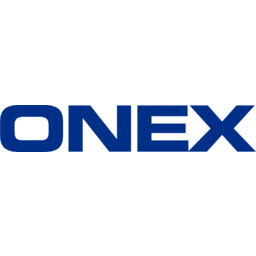
P/E ratio for Onex (ONEX.TO)
P/E ratio as of April 2024 (TTM): 41.9
According to Onex's latest financial reports and stock price the company's current price-to-earnings ratio (TTM) is 41.9368. At the end of 2022 the company had a P/E ratio of 17.7.
P/E ratio history for Onex from 2001 to 2023
PE ratio at the end of each year
| Year | P/E ratio | Change |
|---|---|---|
| 2022 | 17.7 | 259.01% |
| 2021 | 4.92 | -30.82% |
| 2020 | 7.12 | 384.22% |
| 2019 | 1.47 | -117.69% |
| 2018 | -8.31 | -368.01% |
| 2017 | 3.10 | -105.65% |
| 2016 | -54.9 | 378.18% |
| 2015 | -11.5 | -80.07% |
| 2014 | -57.6 | 232.25% |
| 2013 | -17.3 | -54.33% |
| 2012 | -37.9 | -1418.88% |
| 2011 | 2.88 | -113.41% |
| 2010 | -21.4 | -159.35% |
| 2009 | 36.1 | -555.46% |
| 2008 | -7.93 | -134.77% |
| 2007 | 22.8 | 480.35% |
| 2006 | 3.93 | 38.86% |
| 2005 | 2.83 | -102.2% |
| 2004 | -129 | 1810.99% |
| 2003 | -6.75 | -67.73% |
| 2002 | -20.9 | -36.81% |
| 2001 | -33.1 |
How to read a P/E ratio?
The Price/Earnings ratio measures the relationship between a company's stock price and its earnings per share. A low but positive P/E ratio stands for a company that is generating high earnings compared to its current valuation and might be undervalued. A company with a high negative (near 0) P/E ratio stands for a company that is generating heavy losses compared to its current valuation.
Companies with a P/E ratio over 30 or a negative one are generaly seen as "growth stocks" meaning that investors typically expect the company to grow or to become profitable in the future.
Companies with a positive P/E ratio bellow 10 are generally seen as "value stocks" meaning that the company is already very profitable and unlikely to strong growth in the future.